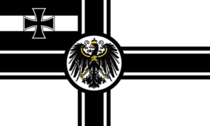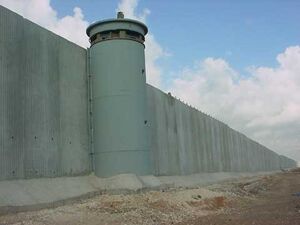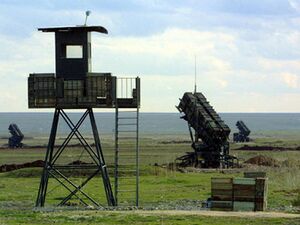TECT Armed Forces
| The TECT Armed Forces. | |
|---|---|
| Kommonisch Kaiserlichen Streitkräfte (Commoner Imperial Forces). | |
 Armed Forces Flag. | |
| Founded | 15,000BCE. |
| Current form | 1949. |
| Service branches |
|
| Headquarters | TECT CENTCOM. |
| Air arm flying hours | 24/7. |
| Leadership | |
| Oberbefehlshaber. | Emperor JC. |
| Ministry of The Armed Forces. | Prince Charles C. |
| Chief of Defence | General Kurt Raskoph. |
| Personnel | |
| Military age | 18-55 years old |
| Conscription | Yes but limited. |
| Available for military service | 678,157,036., age 18-55. (2014 est.) |
| Fit for military service | 489,676,024., age 18-55. (2014 est.) |
| Reaching military age annually | 6,954,132. (2014 est.) |
| Active personnel | 2,500,000. |
| Reserve personnel | 11,300,000. |
| Deployed personnel | TECT territory/territorial waters, South Damoclea, Kamchatka Krai, Xanthisea, SACTO Group, New Celisia. |
| Expenditure | |
| Budget | $20.8 trillion |
| Percent of GDP | 10% |
| Industry | |
| Domestic suppliers | Wolf Armaments. |
| Foreign suppliers | U.R. Defense Security Assistance Agency, Lyran Arms, Schwerpunkt Arms, and Triumvirate Enterprises. |
| Annual imports | $20 Billion NSD+. |
| Annual exports | 2015 Estimate: $15,644,828,774,667+ NSD. |
The Armed Forces of TECT or Kommonisch Kaiserlichen Streitkräfte (Commoner Imperial Forces), are the armed military forces/organizations of The Empire of Common Territories. The TECT Armed Forces comprises of The Imperial Army of TECT, The Royal Guard of TECT, The Imperial Air Force of TECT, The Imperial Navy of TECT, The Home Guard of TECT, and The Union of The Empire's Special Forces. Today, the TECT military today is a powerful state of the art military force numbering at 15,000,000 total personnel and boasting a firm title of 'World Power' in terms of economic and military strength; it utilizes force projection, strategic, domestic, and various other resources to combat enemies of the State and Crown. In terms of reputation, the Armed Forces is known for professionalism, irregular and regular formations, and brutal efficiency. The official anthem of the Armed Forces, which plays during special events like traditional events and parades, is the "Preussens Gloria".
Fallen soldiers and veterans are presented with military honors for funerals if requested to; this is presented by the Funeral Authority in the Armed Forces made up of all primary service branches. The Honor Guard dispatched sends at least two representatives from the fallen soldier's service and a team of guardsmen to carry out funeral duties. Traditionally, depending on rank and prestige, a soldier can be presented with a Three-Gun Salute, a Twenty-One-Gun Salute (all guns fired in synchronization, same as three-gun), or a number of other honors (such as flybys, tank-gun salutes, etc.). The honor guard are presented in matching traditional uniforms as are the representatives. As per tradition, military funerals (same as state) are presented, in the military honor portion, in a series of mentioned honors above: The first action is for the honor guard to play and sing to the official lament, Ich hatte einen Kameraden (the honor guard comes with a small instrument detachment while the eight guards sing). Next played are Taps, which is the official send-off of honored persons to the next life. The last step is the gun salute, which breaks the silence - a folded flag, which is usually draped over the coffin until the last moment, is presented to the immediate survivor(s) such as the parents (usually mother), sibling(s), or whoever was decided to receive the flag. It is tradition for silence to be observed by the funeral attendants from the Kameraden till after the flag is presented to the family. Flags can/usually are lowered to half-mass in such deaths to show respect, as are memorial burnings (usually momentos, flowers, and other burnable items are burned in a large pile, sending said items to the next world to said person who passed on) and memorial services/traditions.
Economically, the arms industrial complex lead by Wolf Armaments is one of the worlds most profitable arms producers and exporters. By the end of the end of the year, Wolf Armaments alone is estimated to make a profit of over fifteen trillion NSD. Buyers of arms are considered often as loyal return customers while allied buyers get generous benefits - overall Wolf Armaments likes to provide discounts to entice more repeat business and larger purchases. With many manufacturing facilities both at home and in foreign countries - Wolf Armaments easily produces and exports the most arms in TECT.
The commander-in-chief (Oberbefehlshaber) of all Commoner Armed Forces, both domestic and foreign, is the Emperor; that is to say that both militias and paramilitary organizations are culturally obligated to serve as military forces for the Emperor, and the country's military forces serve the Emperor first, Empire second. Although, the Emperor can appoint a Oberbefehlshaber at any time to fulfill that role. There are no limitations to the Emperor's control over the armed forces, nor is there a body that outranks the Emperor. Next in command of the armed forces is the Minister of the Armed Forces, a branch of government that coincides with the military in order to manage it. Domestically, the Secretary of Defense is the third in charge. His/Her position is outlined as having responsibility over domestic defense and security - they work closely with the Home Guard, other military branches, and judicial authorities for national security and domestic military defense; the Secretary is also a chief adviser to the Minister, which their department is part of. The next in command follows is the Chief of Staff of the Armed Forces General Kurt Raskoph from the Imperial Army. Following that are numerous ministers, generals, and so on. All high level offices, however, have a standard adviser role to the Emperor since he has final say on all military/government matters. In the absence or appointment of the Emperor, the President of TECT will become the commander-in-chief until the Emperor deems necessary. The armed forces is also regulated partially by members of Congress - most notably the Commons Armed Services Committee and the Senate's Armed Services Committee. Congress has the power to regulate the military in ways applicable to the TECT Constitution, which essentially means Congress requires the blessing of the Emperor to pass regulations/bills concerning the military. Congress in the past have limited military troop numbers, spending, research, and have played a vital role in organization structuring.
Defenses
TECT takes defense of its personnel, people, and most of all, land, very seriously. National security and military affairs are handled by the TECT Armed Forces in conjunctive with the Ministry of Justice. International borders are usually heavily guarded by both stationed soldiers and border patrol units of the many Service Branch's Military Police branches. These borders are usually walled and/or fenced - there are, however, very few land borders because the Empire shares less landmass with other foreign nations. These walled borders usually work with 'entrenched' defenses and military structures along or near the border as border forts or known otherwise as "Wall Forts". Border walls are usually a combination of defenses along the border to prevent illegal immigration and other illegal travel into TECT lands, and to counter hostile activity around the border - this could be from guarding the border against foreign military forces to countering a hostile neighbor's attempt at armed invasion. Wall infrastructure are usually made up of the main wall that is usually call-sign "Wall-One" by border guards; the wall is usually twenty meters tall or more and approximately four meters wide - tower positions make up connection points at designated points, walkways on the interior-side of the wall allow foot travel. The front of the wall is protected by a three-layer fence system that extends approximately fifty meters outward; the first layer is a pyramid of razor-wire with a central fence, second is a larger eight meter tall fence with razor wire, sensors, and often have a smart munition system behind said fence. Lastly, an anti-vehicle/tank trench stops any vehicle - it is met on the interior with additional razor-wire fencing that meets a patrol-road. What comes next is the actual wall and gates along the road. Past the wall is often a brief layer of pyramid razor wire fencing that keeps unauthorized persons out. Depending on the situation, tunnels, ramparts, trenches, and other defenses may exist. Rear garrisons stationed at border facilities exist where military police are based from. Some facilities can be extended as an air or ground base for border stationed military units. Anti-air and other artillery pieces are located farther behind the walls to act as immediate countermeasures to hostile crossing attempts via air or land.
Land borders are patrolled often as a sign of both activity and alertness - creating a deterrence to anyone attempting to cross. The largest borders, however, exist at sea and air as the TECT Mainland is a continent surrounded by oceans that connect to other bodies of waters. With this knowledge, TECT invests heavily in both its naval and air forces to allow them to patrol the air and seas around the country. TECT claims territorial control over these oceans surrounding its land according to the country's [ Royals Boundaries Act]. To patrol this vast amount of water, the Imperial Navy (under the Coast Guard branch) uses light carriers, frigates, cutters, and patrol aircraft; to better enforce its claims, the Imperial Navy operates permanent surveillance sonar stations on the sea floor to detect any water vessel within their sphere. Although its publicly knowledge, most experts believe the systems are placed along a rough line of one thousand five hundred kilometers, centered in the EEZ. Flights with fighter aircraft, drones, and large patrol aircraft are routine. On the ground, TECT forces utilize mobile units like SAM/Anti-Shipping forces based around the Heiliger Blitz Air/Sea Defense System. Other ground units are deployed near areas where marine landings are capable or possible.
The TECT Government and Armed Forces considers territorial protection a top priority - protecting personnel, equipment, and land is top priority. It does not take intrusions lightly nor does it attempts at incursions. The country's strong-handed anti-piracy campaign has also brought controversy and example of how serious the Navy is at stopping illegal activity. Listed cases of mistaken identification and false alarms have prompted outrage, for example, for said strong arm tactics. To fix the issues prompted by outrage, the Armed Forces set new policies that include more warnings, clearer intent, and more restraint on non-military targets. To access territorial waters, you must seek approval via visas to be protected in Commoner waters; your planned course and other information is required. Illegal immigration is rare in TECT because of these many situations.
Standard Equipment
Soldiers in all branches of the armed forces use similar standard equipment from uniforms, firearms, and equipment. Though, different branches and special units do differ depending on duty and branch of service. Wearing standard GCU's; troops also wear Verteidiger Armor, WRETCH Helmets, Berkeley HEATRAY assault gloves, and Mamba tactical boots - all of which are domestically produced thanks to domestic production license ownership or home design. Troops commonly use as well the Badger trench axe for close combat and for digging purposes. The main side arm of the armed forces is the Mark-7 Kanone; the standard service rifle is the AR Scorpion, and the standard combat/utility knife is the Model 13 combat knife for combat and other useful purposes. Berkeley XRAY sunglasses are also commonly worn.
The AR Scorpion assault rifle/modular weapon system that acts as the main service arm of the military.
The Fang Sniper System.
Mark-7 Kanone Service Pistol.
Lycose combat machete. Info.
Mark 5 Series of multi-purpose grenades (smoke, chemical, incendiary, stun, fragmentation). Info.







